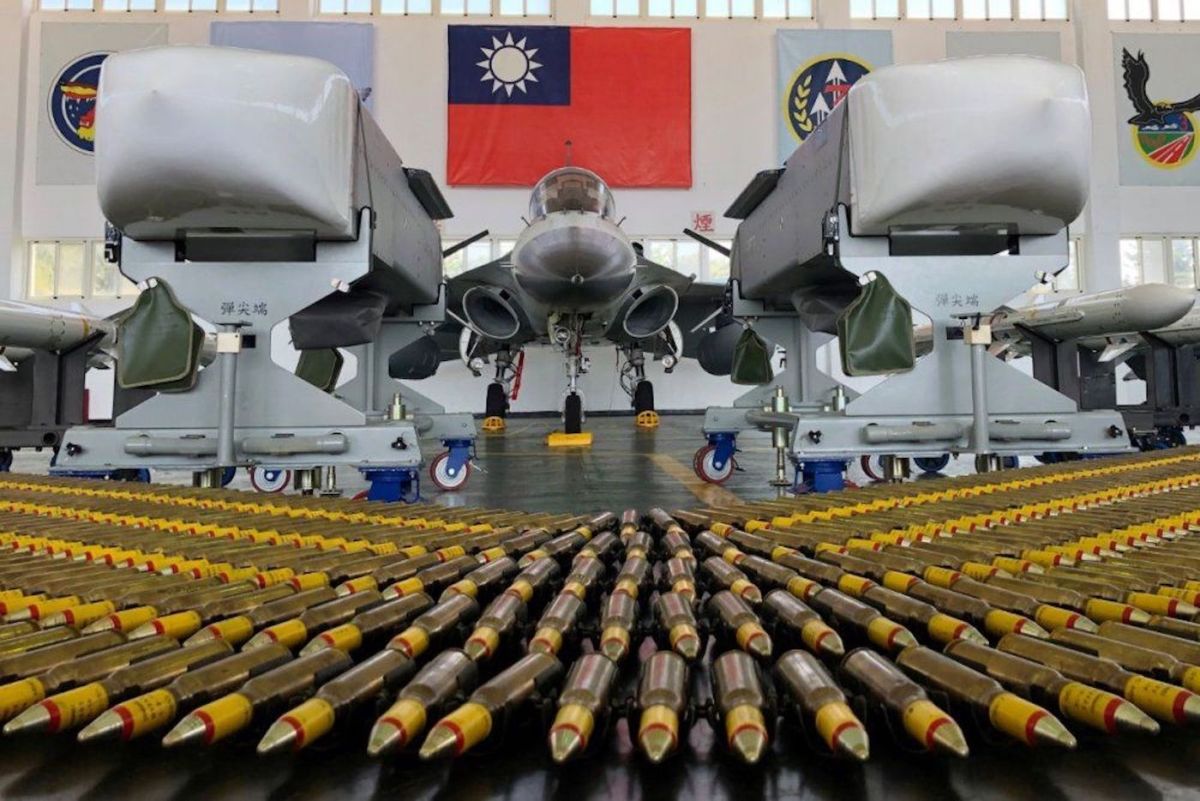Global Courant 2023-05-07 13:15:28
Taiwan is seeking help from the US in building its next-generation fighter, despite Washington’s relative reluctance to date to provide advanced fighters to the self-governing island to counter China’s current massive airpower advantage.
This was reported by Reuters this month that Taiwanese defense contractor Aerospace Industrial Development Corp (AIDC) is seeking US help in designing its next-generation fighter jet.
Speaking at a Taiwan-U.S. defense industry forum in Taipei, AIDC Chairman Hu Kai-hung said, according to Reuters, that “when it comes to developing the next generation of combat aircraft, we hope the U.S. will support Taiwan to develop it itself, including the engine , avionics, control systems, environmental controls and so on, all of which provide an opportunity for Taiwan-US cooperation.
The Reuters report notes that Taiwan first announced its next-generation fighter program in 2017, stating at the time that it would have stealth features, but has not provided any additional details since then.
The US and other countries have so far failed to provide advanced military technology to Taiwan, either out of concern to annoy China or fear that it could be compromised or exposed to espionage in Taiwan’s famously porous military installations.
That forced Taiwan to develop and produce indigenous weapons such as drones, missiles, warships and submarines.
Reuters points out that Taiwan has two notable indigenous jet aircraft, the Indigenous Defense Fighter (IDF), which first flew in 1989, and the AT-50 Brave Eagle trainer, which entered flight testing in 2020.
Taiwan’s current combat force consists of F-16s, Mirage 2000s, IDFs and F-5s, which in their current state and configuration are unlikely to be enough to repel a Chinese invasion.
A 2012 report from the US-Taiwan Business Council first warned of an impending battle gap between China and Taiwan, noting that the latter would need to deploy a fleet of between 360 and 400 fighters to defend against an invasion by 700 People’s Liberation Army – Air Force (PLA-AF) fighters who are stationed right next to Taiwan.
China’s J-20 fighter jets fly in formation at an air show. Image: China Daily
While the report notes that qualitative upgrades to Taiwan’s battle fleet can improve combat effectiveness, they cannot replace quantity and physical presence.
The Washington Post confirms that report in an April 2023 article, stating that barely half of Taiwan’s fighters are fully capable of performing missions. The report says it would take at least a week to move the jets inside hardened shelters, posing a huge problem if China launches preemptive air and missile strikes to destroy those planes on the ground.
Military Watch notes in a March 2021 article that Taiwan’s F-16s and IDFs are the most capable fighters, while the Mirage and F-5s are slated to be retired due to performance issues and advanced age, respectively. However, Military Watch records that the Taiwanese F-16s and IDF fighters were first delivered in the 1990s, indicating possible obsolescence without upgrades.
It says that while the F-35 was considered the natural successor to the F-16, US concerns about Chinese espionage prevented the former from being sold to Taiwan. The Taiwanese F-16s were upgraded in the 2000s to fire the AIM-120C beyond-visual-range (BVR) air-to-air missile with a range of 100 kilometers, followed by upgrades such as the AN/APG-83 radar, new mission computers, enhanced electronic warfare suite, and modern avionics and precision weapons.
Military Watch says Taiwan’s IDF is the lightest fourth-generation twin-engine fighter in service and benefits from the integration of indigenous technologies.
While noting that the IDF is slower than the F-16, it can use domestically developed weapons such as the air-to-air missile Sky Sword and the Wan Chien cruise missile, which are superior to anything deployed by F-16s, and benefits from more frequent upgrades at a lower cost compared to the Taiwanese F-16 fleet.
Despite those upgrades, the source notes that Taiwan’s long-standing inability to acquire more expensive aircraft from the US puts it at a serious disadvantage against the PLA-AF, which has heavier, longer-range and increasingly sophisticated aircraft like the J-AF. 20 5th generation stealth fighter.
Aside from low fleet strength, low readiness levels and possibly more capable Chinese fighters, the Taiwanese Air Force is also facing a shortage of pilots.
The Washington Post notes in a February 2023 article that even if Taiwan succeeds in expanding its F-16 fleet to 200 aircraft by 2026, its low number of pilot training programs – it only added 21 F-16 pilots from 2011 to 2019 – falls far short of the 100 pilots it has completed in three years are needed to fly its growing fleet.
The Washington Post reports that China’s intensified air operations around Taiwan have exacerbated Taiwan’s pilot shortage as senior F-16 pilots must be taken off training duties to intercept increasingly intensive Chinese air raids.
It also notes that Taiwan has had to lower entry standards for prospective pilots, pay bonuses to keep F-16 pilots nearing retirement, recruit officers from other military branches for pilot training, and pilots trained on other fighter jets. allow to fly F-16s.
Taiwan regularly scrambles its US-made F-16 fighter jets like this one to intercept mainland aircraft in its airspace. Photo: AFP/Sam Yeh
Still, strengthening Taiwan’s combat fleet may not be the answer to the self-governing island’s increasingly precarious security situation.
Matthew Revels mentions in an April 2023 article for the Journal of Indo-Pacific Affairs that while Taiwan’s public statements emphasize an asymmetrical defense, its continued acquisition of high-value prestige assets such as fighter jets tell the opposite.
Revel mentions that Taiwan will likely try to challenge China’s mastery of the air by pitting its outnumbered fighters against the latter’s numerically and qualitatively superior aircraft, a likely losing strategy.
He says Taiwan is also downplaying how vulnerable its planes on the ground are to saturated air and missile strikes. In the event of an attack, China is likely to prioritize destroying Taiwan’s fighter jets and runways, seeing these assets as the centers of gravity of its former air defenses.
Rather than spending heavily on fighter jets, Revel says Taiwan should forego purchasing manned fighter jets in favor of a denial strategy centered on a robotic air force backed by numerous short-range air defense systems (SHORAD).
Revel notes that a robotic air force built around cheap, expendable loitering munitions and swarms of drones could negate the PLA-AF’s air superiority over potential landing sites, threaten troopships and logistics transports, and provide a force multiplier more capable than any manned aircraft.
He also says that with sufficient supplies, numerous SHORAD systems can exhaust PLA-AF aircraft forced to fly at lower altitudes to conduct close air support (CAS) missions for landing forces.
Similar:
Loading…








